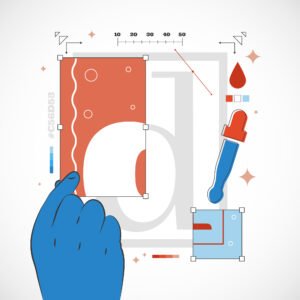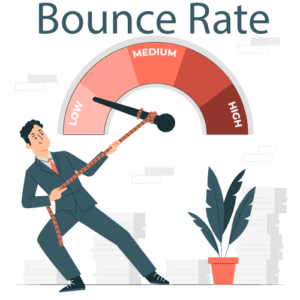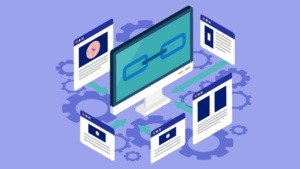
Dealing with unhappy customers is an inevitable part of any business. While it can be challenging, these situations provide an opportunity to showcase your commitment to customer satisfaction and turn negative experiences into positive outcomes. This comprehensive guide will delve into practical strategies for approaching and communicating with unhappy customers effectively.
Stay Calm and Listen
Maintaining a calm and composed demeanor is essential when interacting with an unhappy customer. Allow them to express their concerns without interruption, actively listening to understand the root of the issue. Empathy plays a crucial role here, as acknowledging their feelings demonstrates genuine concern for their experience. By giving the customer your full attention and showing empathy, you help de-escalate their emotions and make them feel heard and valued.
Key Steps:
- Practice active listening by nodding and making affirming statements.
- Avoid interrupting the customer while they are speaking.
- Acknowledge their emotions and express empathy.
Apologize and Take Responsibility
A sincere apology can go a long way in diffusing tense situations. Regardless of who is at fault, taking responsibility for the customer’s inconvenience shows that you prioritize their satisfaction over placing blame. An apology demonstrates humility and a commitment to resolving the problem. It also reassures the customer that you take their concerns seriously and are dedicated to rectifying the situation.
Key Steps:
- Offer a genuine and specific apology.
- Avoid making excuses or shifting blame.
- Show a willingness to take ownership of the problem.
Validate Their Concerns
Validating the customer’s concerns reassures them that their feelings are acknowledged. Repeat their main points to confirm your understanding and emphasize that their feedback matters. This approach helps build trust and bridges the gap between dissatisfaction and resolution. It also ensures that you have a clear understanding of the issue before moving forward with a solution.
Key Steps:
- Summarize the customer’s concerns to show you have listened.
- Express understanding and agreement with their points.
- Reinforce that their feedback is valuable and will be taken seriously.
Provide Solutions
After understanding the issue, offer appropriate solutions. Present options that align with their needs and the company’s policies. Be prepared to suggest alternatives and be flexible in finding a resolution that leaves the customer satisfied. Empower them to make decisions about the solution, making them feel valued and in control of the resolution process.
Key Steps:
- Offer multiple solutions and explain each option clearly.
- Be flexible and willing to go the extra mile to resolve the issue.
- Involve the customer in the decision-making process.
Act Promptly
Timely responses are crucial when addressing customer dissatisfaction. Delaying your response can exacerbate their frustration. Even if a complete solution takes time, acknowledge their concern promptly and inform them about the steps being taken to resolve the issue. Providing regular updates keeps the customer informed and shows your commitment to resolving their problem efficiently.
Key Steps:
- Acknowledge the issue immediately and communicate the next steps.
- Provide a realistic timeline for resolution.
- Keep the customer informed with regular updates.
Maintain Professionalism
Throughout the conversation, maintain a professional and respectful tone. Avoid becoming defensive or confrontational, even if the customer is expressing frustration. Your goal is to find a solution, not escalate the situation. Professionalism helps maintain a positive image of your business and demonstrates your capability to handle challenging situations effectively.
Key Steps:
- Stay calm and composed, even if the customer is upset.
- Use polite and respectful language.
- Focus on finding a resolution rather than engaging in conflict.
Follow Up
After implementing a solution, follow up with the customer to ensure their issue has been resolved to their satisfaction. This proactive approach shows that you value their feedback and are committed to ongoing improvement. Following up also provides an opportunity to reaffirm their positive impression of your business and can help rebuild trust.
Key Steps:
- Contact the customer after the issue has been resolved.
- Ask for their feedback on the resolution process.
- Thank them for their patience and understanding.
Learn from Feedback
Every interaction with an unhappy customer is an opportunity for growth. Analyze the feedback and identify patterns to prevent similar issues in the future. Use their input to refine your processes and enhance customer experiences. By learning from these interactions, you can continuously improve your customer service and reduce the likelihood of future complaints.
Key Steps:
- Document customer feedback and analyze it for common themes.
- Implement changes based on recurring issues.
- Train your team on new procedures and best practices.
Additional Strategies for Handling Unhappy Customers
Empathy and Emotional Intelligence
Understanding and managing your own emotions, as well as recognizing and influencing the emotions of others, is key in handling unhappy customers. Emotional intelligence helps you navigate difficult conversations and build stronger customer relationships.
Key Steps:
- Practice self-awareness to manage your own emotions.
- Show empathy by acknowledging the customer’s feelings.
- Use emotional cues to guide your responses.
Training and Empowering Your Team
Equip your customer service team with the skills and authority they need to handle customer complaints effectively. Training should focus on communication skills, conflict resolution, and company policies. Empowered employees can resolve issues more efficiently and improve overall customer satisfaction.
Key Steps:
- Provide comprehensive training on customer service best practices.
- Allow employees the autonomy to make decisions and offer solutions.
- Encourage a culture of continuous learning and improvement.
Leveraging Technology
Utilize customer relationship management (CRM) systems to track interactions and manage customer feedback. Technology can help streamline the complaint resolution process and provide valuable data for improving customer service.
Key Steps:
- Implement a CRM system to track customer interactions.
- Use data analytics to identify trends and areas for improvement.
- Automate follow-up processes to ensure consistency.
Personalizing the Customer Experience
Tailor your responses and solutions to the individual needs of each customer. Personalization shows that you value them as individuals and are committed to meeting their specific needs.
Key Steps:
- Use customer data to inform your responses.
- Address customers by their names and reference their specific concerns.
- Customize solutions to fit their unique situations.
Proactive Customer Service
Anticipate potential issues and address them before they become complaints. Proactive customer service can prevent dissatisfaction and demonstrate your commitment to excellence.
Key Steps:
- Regularly review customer feedback to identify potential issues.
- Communicate proactively about potential disruptions or changes.
- Offer solutions before the customer raises a complaint.
Building a Customer-Centric Culture
Foster a company culture that prioritizes customer satisfaction at every level. A customer-centric approach ensures that every team member is committed to delivering exceptional service.
Key Steps:
- Embed customer satisfaction into your company values.
- Recognize and reward employees who exemplify excellent customer service.
- Continuously seek and act on customer feedback.
Conclusion
Turning an unhappy customer into a satisfied advocate requires patience, empathy, and effective communication. By listening actively, apologizing sincerely, and promptly providing solutions, you can resolve their immediate concerns and build a stronger relationship based on trust and understanding. Embrace these opportunities as a chance to showcase your dedication to exceptional customer service. By implementing these strategies, you can not only address current issues but also prevent future ones, leading to improved customer satisfaction and loyalty.

















































